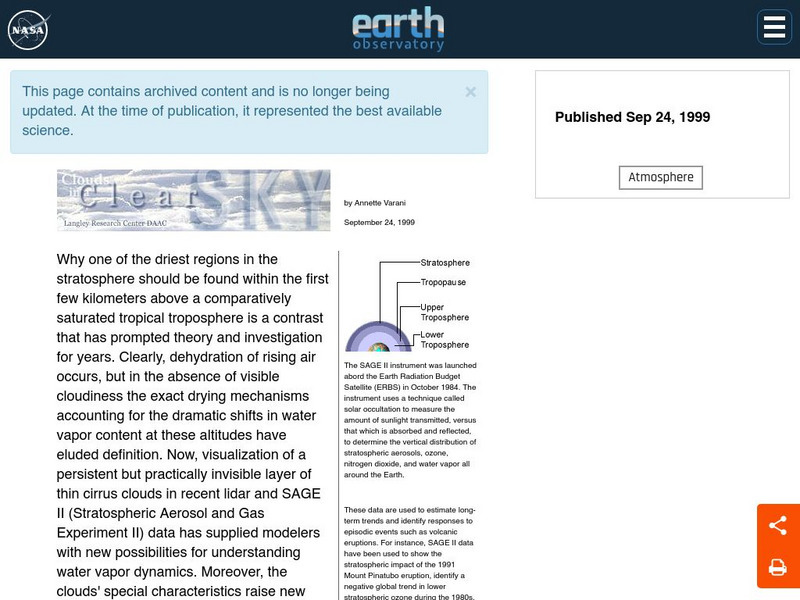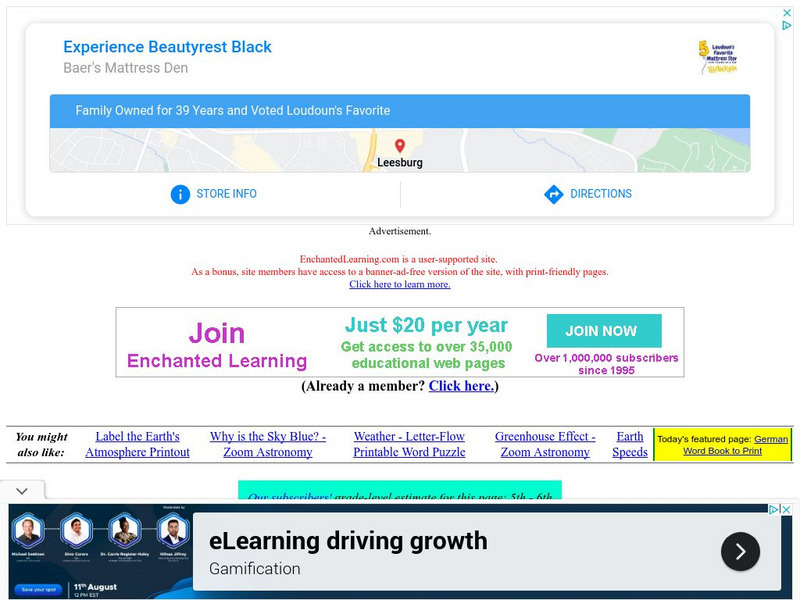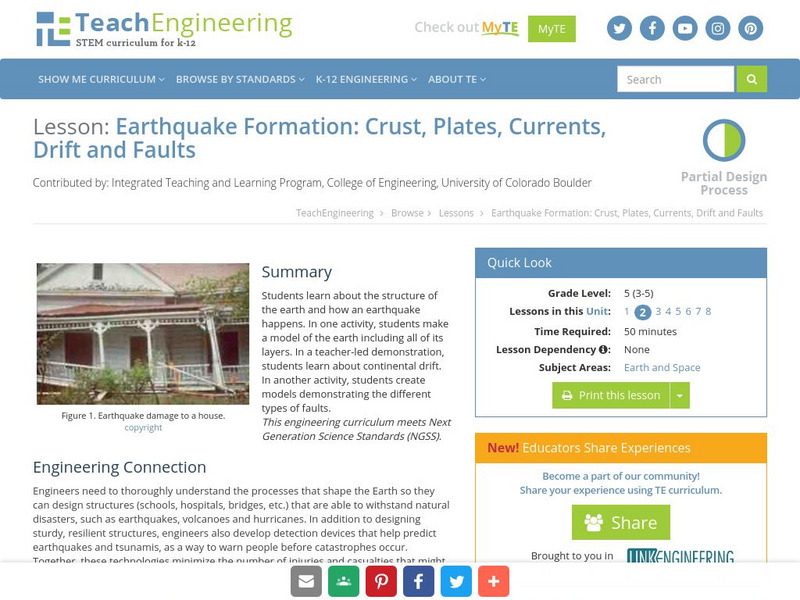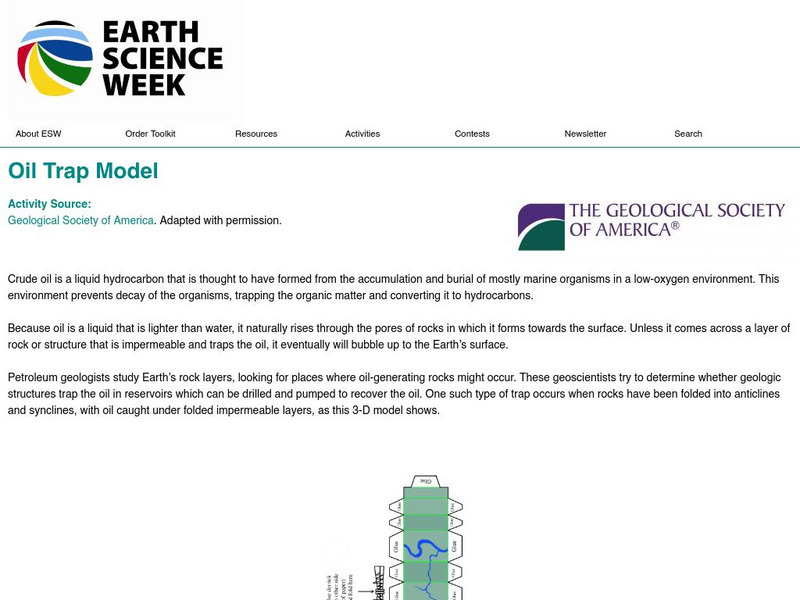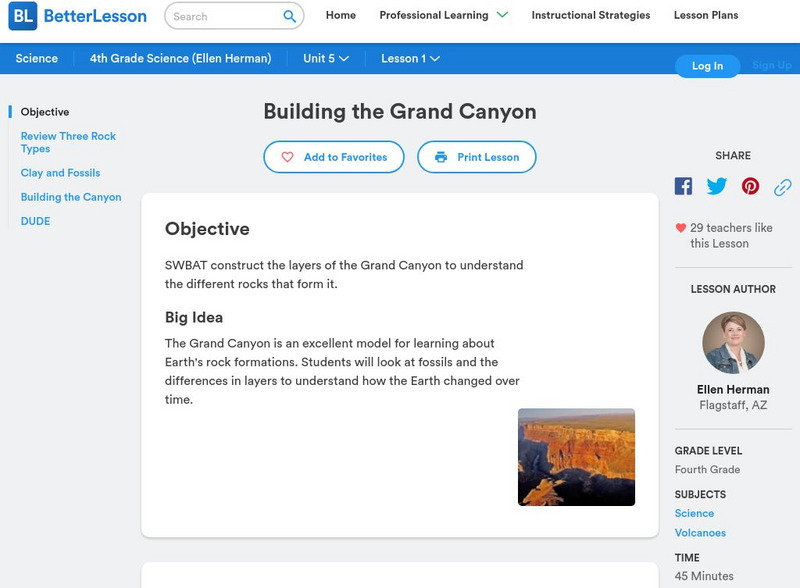Hi, what do you want to do?
Encyclopedia of Earth
Encyclopedia of Earth: Physics & Chemistry: Ozone
Article explaining what ozone is, how it forms in the atmosphere, and the environmental problems it creates. (Published: August 22, 2008)
Other
Prince George's Community College: Reading the Rock Record [Pdf]
This is an in-depth activity where students create a rock layer formation using different colors of playdough and investigate the types of folds and rock formations that might occur. They take core samples through anticlines and...
The Franklin Institute
The Franklin Institute: Land Mass Formation
The Franklin Institute has provided a demonstration that theorizes how the earth's crust was formed. This is a lesson plan that needs only a few materials.
CK-12 Foundation
Ck 12: Earth Science: Principle of Horizontality
[Free Registration/Login may be required to access all resource tools.] Rules for sedimentary rock formation.
NASA
Nasa Earth Observatory: Clouds in a Clear Sky
This article introduces the different layers of the atmosphere and the clouds that are formed there. Scientists use instruments such as the SAGE 11 that help to measure amounts of sunlight, water vapor, and other conditions that affect...
Center for Educational Technologies
Earth Science Explorer: The Rock Cycle
This one-page explanation of the rock cycle contains a very helpful diagram and useful explanatory notes. Site explains how rocks are made and broken down.
Enchanted Learning
Enchanted Learning: The Earth's Atmosphere
The Earth's atmosphere is a thin layer of gases that surrounds the Earth. It composed of 78% nitrogen, 21% oxygen, 0.9% argon, 0.03% carbon dioxide, and trace amounts of other gases. This thin gaseous layer insulates the Earth from...
NOAA
Noaa: The Ionosphere [Pdf]
SEC produced several articles to help teachers teach about space weather. This one covers the ionosphere. It covers the characteristics, variability, and scintillation of this layer of the atmosphere. PDF format.
TeachEngineering
Teach Engineering: Earthquake Formation
Students learn about the structure of the earth and how an earthquake happens. In one activity, students make a model of the earth including all of its layers. In a teacher-led demonstration, students learn about continental drift. In...
Ducksters
Ducksters: Earth Science for Kids: Soil
Kids learn about the Earth science subject of soil including how it is formed, properties, horizons, layers, topsoil, bedrock, and facts about soil.
American Geosciences Institute
American Geosciences Institute: Earth Science Week: Oil Trap Model
Learners make and study a 3-D model of a cross section of the earth where oil has formed.
Geography 4 kids
Geography4 kids.com: Composition
Diagrams explain the internal composition of the earth. The mantle and the core are discussed along with the role density played in the initial formation of the layers.
The Franklin Institute
Franklin Institute: How Sedimentary Rock Is Formed
The Franklin Institute describes the way sedimentary rock is formed, with links to descriptions of several types of sedimentary rocks.
Science Buddies
Science Buddies: Get Down and Dirty: How Does Soil Change With Depth?
What covers less than 10% of the Earth's surface, yet is a vital natural resource for terrestrial life? What filters ground water and supports most of our food production, not to mention the production of building materials and paper?...
Better Lesson
Better Lesson: Building the Grand Canyon
The Grand Canyon is an excellent model for learning about Earth's rock formations. Students will look at fossils and the differences in layers to understand how the Earth changed over time. Resources included are detailed instructions...
Energy4Me
Energy4me: Name That Tune
Young scholars will learn that scientists use seismic technology (sound waves) to map patterns of rock formations below the surface of the earth and that different types of rocks affect sound waves.





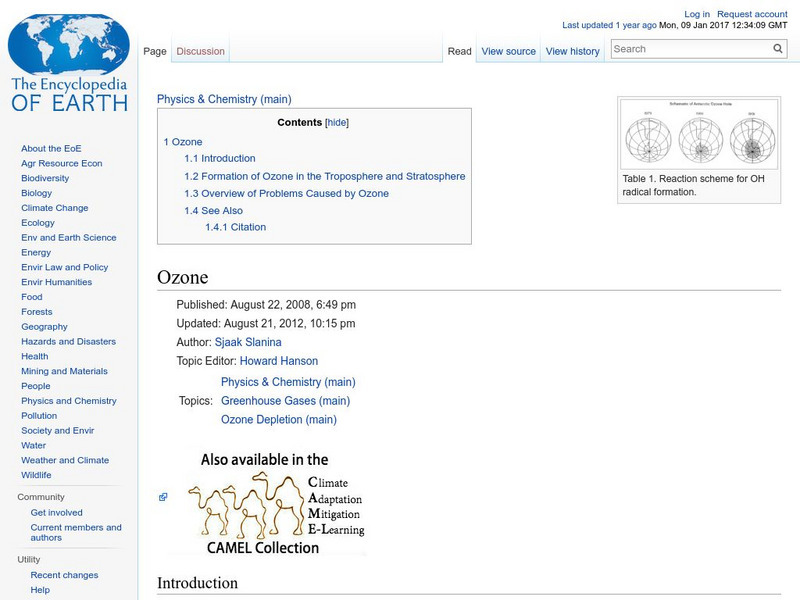
![Prince George's Community College: Reading the Rock Record [Pdf] Activity Prince George's Community College: Reading the Rock Record [Pdf] Activity](http://lessonplanet.com/content/resources/thumbnails/410006/large/bwluav9tywdpy2symdiwmduymc0xotawms0xn3i0zzvplmpwzw.jpg?1589984663)


